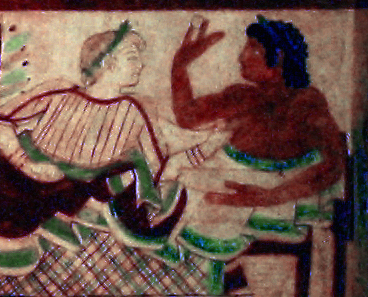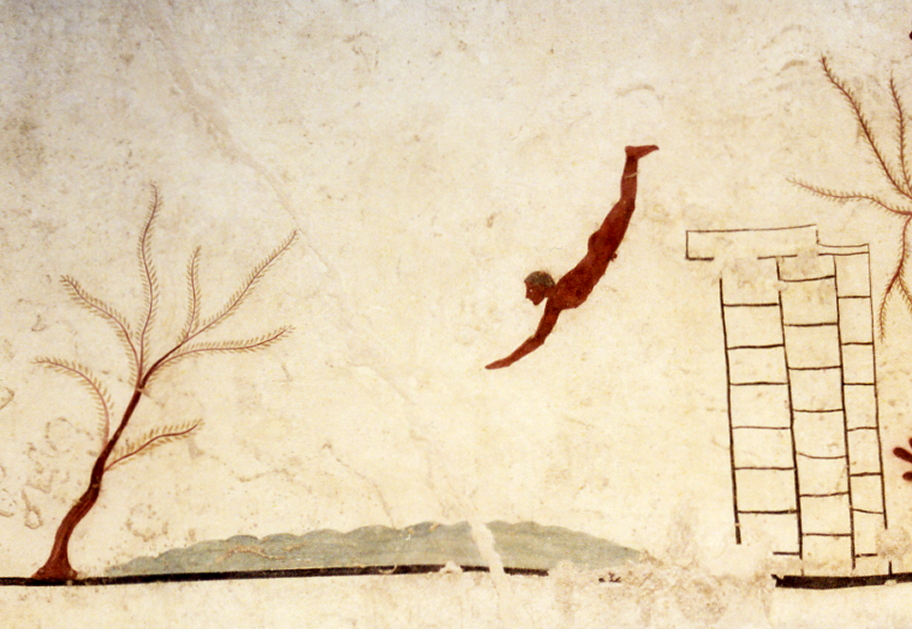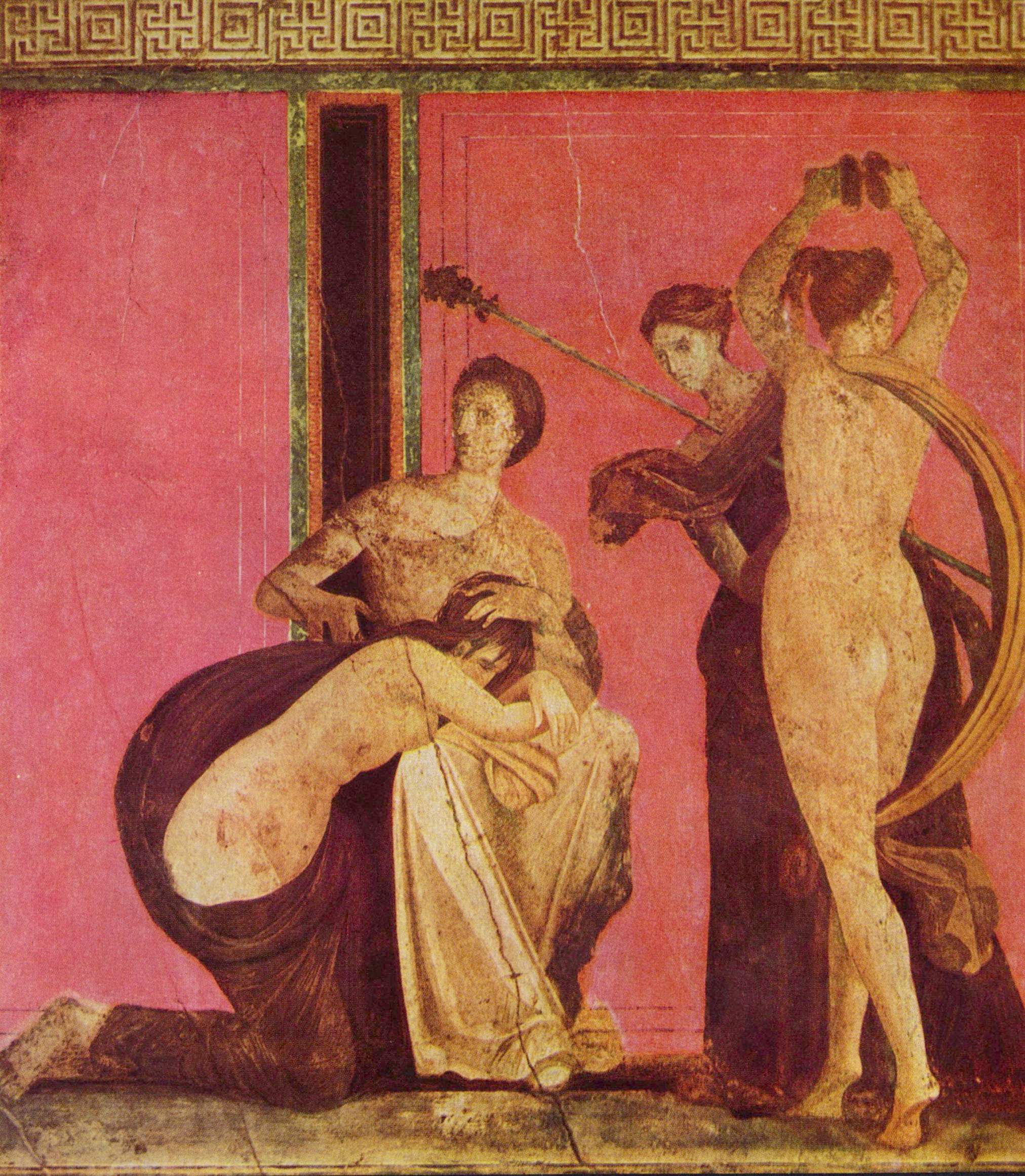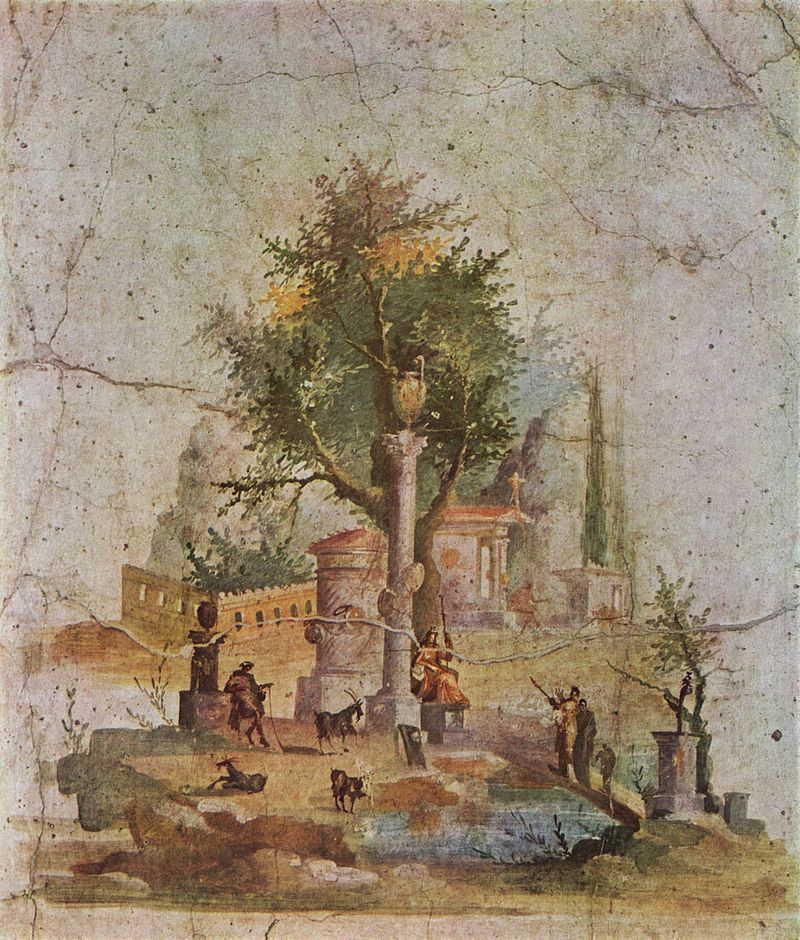Are you a fan of the Etruscans and their painted eggs (like Staff Writer Costanza Beltrami)? Is Apelles’ advice “Not a day without a line drawn” your motto? Do you want to impress your friends by telling your Quintus Pedius from your Gaius Fabius?
If the answer is yes, you can’t miss the Cambridge University Press’ new book The Cambridge History of Painting in the Classical World: a multi-author volume covering all aspects of mural and panel painting in the Classical world, from the earliest Minoan and Cycladic frescoes of the Aegean Bronze Age to Etruscan and late Roman painting – approximately 1800 B.C. to A.D. 400. With more than 300 illustrations and nine chapters by leaders of the field, this book may be your ticket to the Golden Age.
You can read a review of this book on The Art Newspaper, or learn more from the publisher, or buy it on Amazon.
Wall paintings, Tomb of Hunting and Fishing, 6th century BC, Necropolis of Monterozzi, Tarquinia.
Wall painting, Tomb of the Leopards, c. 470-c. 460 BC, Necropolis of Monterozzi, Tarquinia.
Wall painting, Tomb of the Diver, 480 -470 BC, Paestum, Campania.
Floor mosaic from the House of the Faun in Pompeii, 100 BC, supposed to be a Roman copy of a painting by Apelles or Philoxenus of Eretria. Naples, Museo Archeologico Nazionale.
Wall Painting from the House of Venus, Pompeii, 1st century AD, supposed to be a Roman copy of a famous Greek portrait of Campaspe, mistress of Alexander the Great.
Wall painting from the Villa of the Mysteries, Pompeii, 80 BC.
Idyllic landscape from the Villa of Agrippa Postumo, Boscotrecase, eary 1st century AD. Naples, Museo Archeologico Nazionale.






